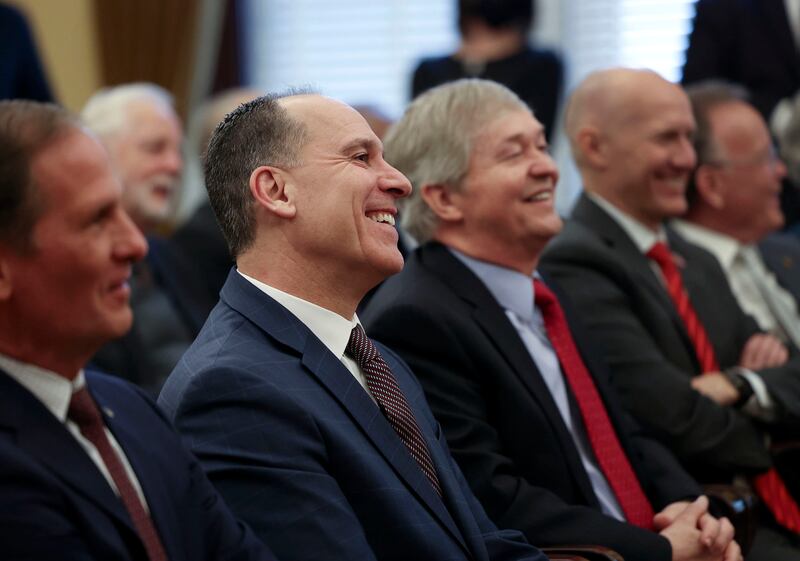Years of informal collaborations between University of Utah researchers and scientists at Idaho National Laboratory, including work that’s led to benchmark discoveries and advancements, will now move to the next level under a new agreement announced Wednesday morning.
The news was unveiled at a Utah Capitol press event that included elected officials as well as leaders from the U. and Idaho National Laboratory.
The Strategic Understanding for Premier Education and Research, or SUPER agreement, allows the organizations to explore deeper research collaborations and expand opportunities for students, faculty and researchers.
The five-year agreement solidifies what had been individual peer-to-peer agreements between laboratory researchers and university faculty members. Those will be replaced with a broad institutional memorandum encouraging greater collaboration including shared academic materials, visiting research scholars and cooperative symposia, seminars, workshops and conferences.
U. College of Engineering Dean Richard Brown said the elevation of ad hoc cooperative research efforts to a formal agreement with Idaho National Laboratory will have widespread benefits for both institutions.
“We really do have a lot of common interests and research areas,” Brown said. “This agreement will facilitate many more collaborations across multiple disciplines.”
Brown said a recent survey identified 18 U. researchers already working with colleagues at Idaho National Laboratory and over 90 others who anticipate opportunities for teaming up with scientists located in Idaho Falls, about a three-hour drive north of the U. campus.

The Idaho National Laboratory is one of 17 facilities across the country operated by the U.S. Department of Energy and tasked with tackling “the critical scientific challenges of our time — from combating climate change to discovering the origins of our universe — and possess unique instruments and facilities, many of which are found nowhere else in the world.”
The Idaho lab is the nation’s center for nuclear energy research and development and also performs research in each of the energy department’s strategic goal areas: energy, national security, science and the environment.
“As a national laboratory supporting national priorities, we see significant value in regional partnerships to advance innovative science and technology,” said INL Laboratory director John Wagner in a press statement. “Partnerships with regional institutions like the University of Utah expand our reach and elevate our impact.”
Brown said U. researchers are working with Idaho lab scientists on multiple projects including a system to create priority wireless access during emergencies for first responder agencies; an underground field laboratory for geothermal research near Milford; the development of low-cost production for a nuclear isotope that could lead to advances in the diagnosis and treatment of cancer; and advanced battery technology.

A planned new facility for the U.’s College of Engineering will likely help fuel new cross-fertilization opportunities with the Idaho lab with expanded curriculum and the capacity to double the number of students in the school’s various programs. And Brown noted the new building may also house a special secure lab area that could play a role in collaborating with Idaho National Laboratory on projects with national security sensitivities.
With the new SUPER agreement, the U. joins two Texas schools that are already working with the Idaho lab on critical research.
Idaho National Laboratory spokesman Ethan Huffman said the lab is collaborating with Texas A&M on nuclear energy projects and the University of Texas at San Antonio on cybersecurity research.
Huffman said the agreement with the U. is notable for its broad scope and one that will evolve over time as projects with collaboration potential are identified and launched.
“(This agreement) is unique in the sense that what it allows us to do is look at the university holistically,” Huffman said. “We can look at the entire U., all of the faculty members, all of the students, as a way for us to meet some of the missions of the Department of Energy.”
Huffman said one of the most interesting outcomes for U. and Idaho National Laboratory researchers is the development of a new, low-cost technique for producing the radioactive isotope scandium-47. While the initial research was focused in the national security space, the method for greatly reducing the cost of the isotope could lead to novel and effective new procedures for both diagnosing and treating some forms of cancer.
Huffman added that pre-clinical research by Huntsman Cancer Institute has shown great potential for the material as research work continues.


